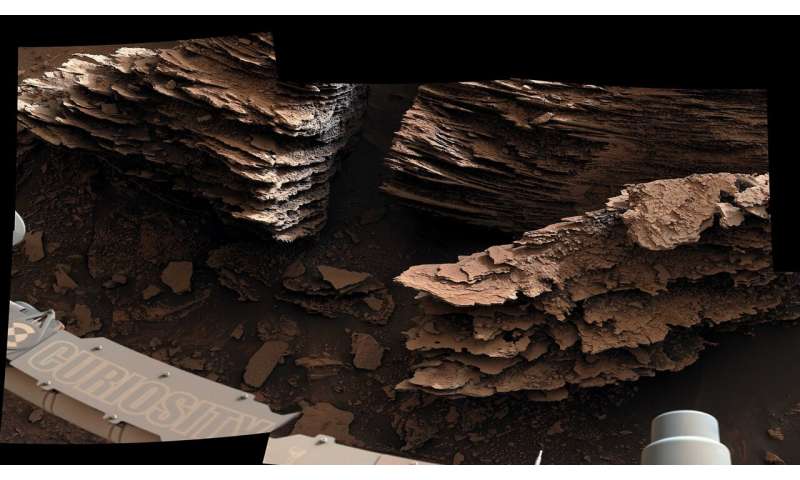Best of Last Week—Stunning pics from Mars, an organic bipolar transistor, link between immune system and hair growth

It was a good week for space research as a team at NASA's Jet Propulsion Laboratory released images captured by the Curiosity rover showing stunning views of the Martian landscape taken while the rover was traveling through a transition zone. Also, a team with members from several institutions in the U.S. and one in Spain helped unravel a mystery surrounding a surprise asteroid. Images from the Arecibo Observatory showed asteroid 2019 Ok barreling toward Earth in 2019 after emerging from Earth's blind spot in the sun's path. And an international team discovered a star that had survived a supernova and emerged even brighter than before the massive explosion.
In technology news, a team with members from several institutions in Germany and one in Spain designed and built the first organic bipolar transistor—its thin, layered structure allowed it to operate in the gigahertz range. Also, a combined team from the University of California and the University of Messina built a fast and energy-efficient sparse Ising machine to solve computationally difficult problems. And a team at Carnegie Mellon University built a camera system capable of seeing sound-produced vibrations with precision that allowed for reconstructing the music from a single instrument in an orchestra or band. Also, a team at the University of California, Santa Barbara, developed a neural autoencoder to enhance sensory neuroprostheses as a means for restoring vision in people with blindness.
And in other news, an international team of researchers found that people who are unable to stand on one leg for 10 seconds in mid to later life have a near double risk of death over the next 10 years of their life. They noted that those who failed the simple test tended to have poor health. Also, a combined team from the University of Arizona and the Climate and Global Dynamics Laboratory, National Center for Atmospheric Research solved a long-standing mystery surrounding what may have triggered the last ice age. And finally, a team at the Salk Institute who had been studying conditions that lead to alopecia, found a surprising link between the immune system and hair growth.
© 2022 Science X Network